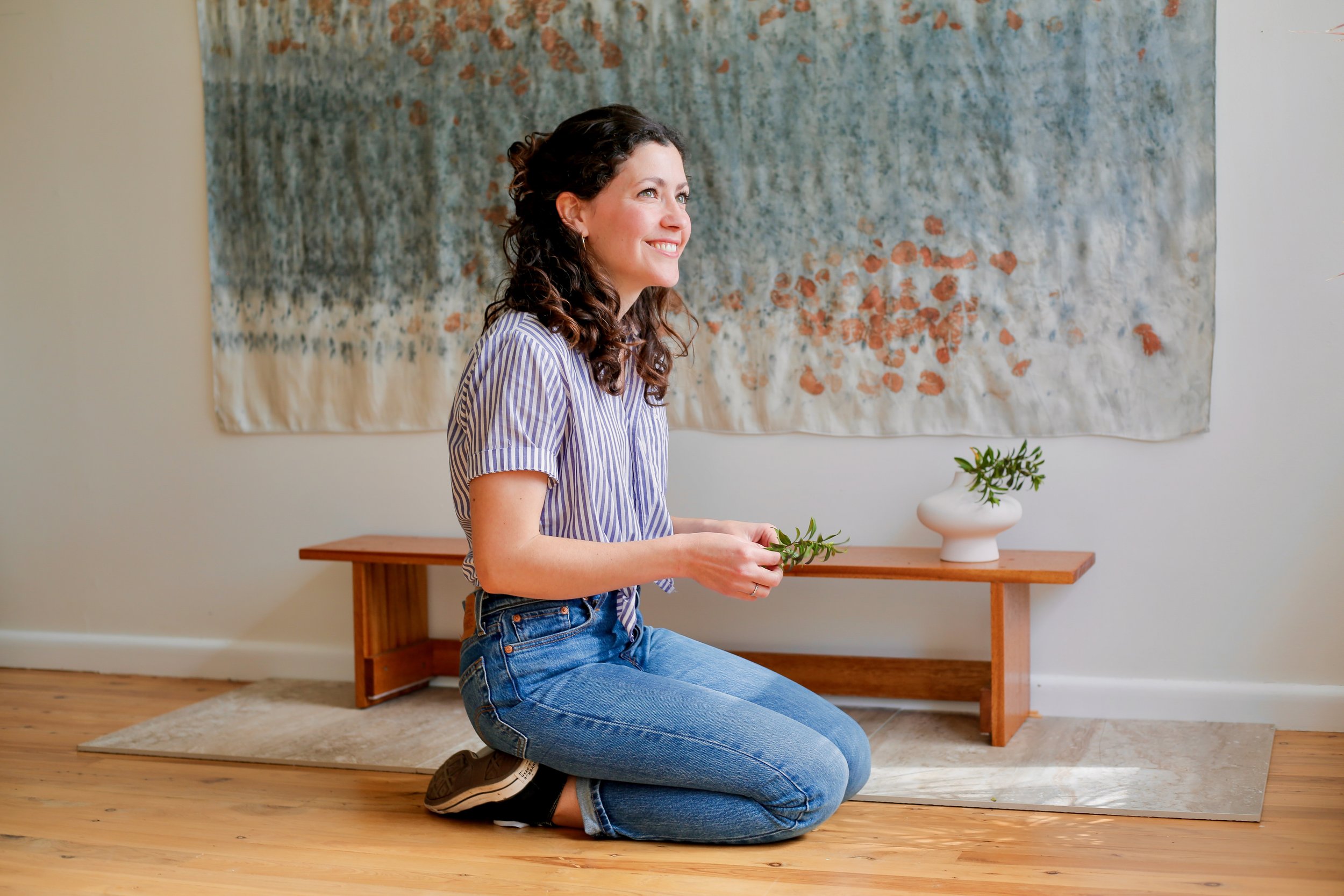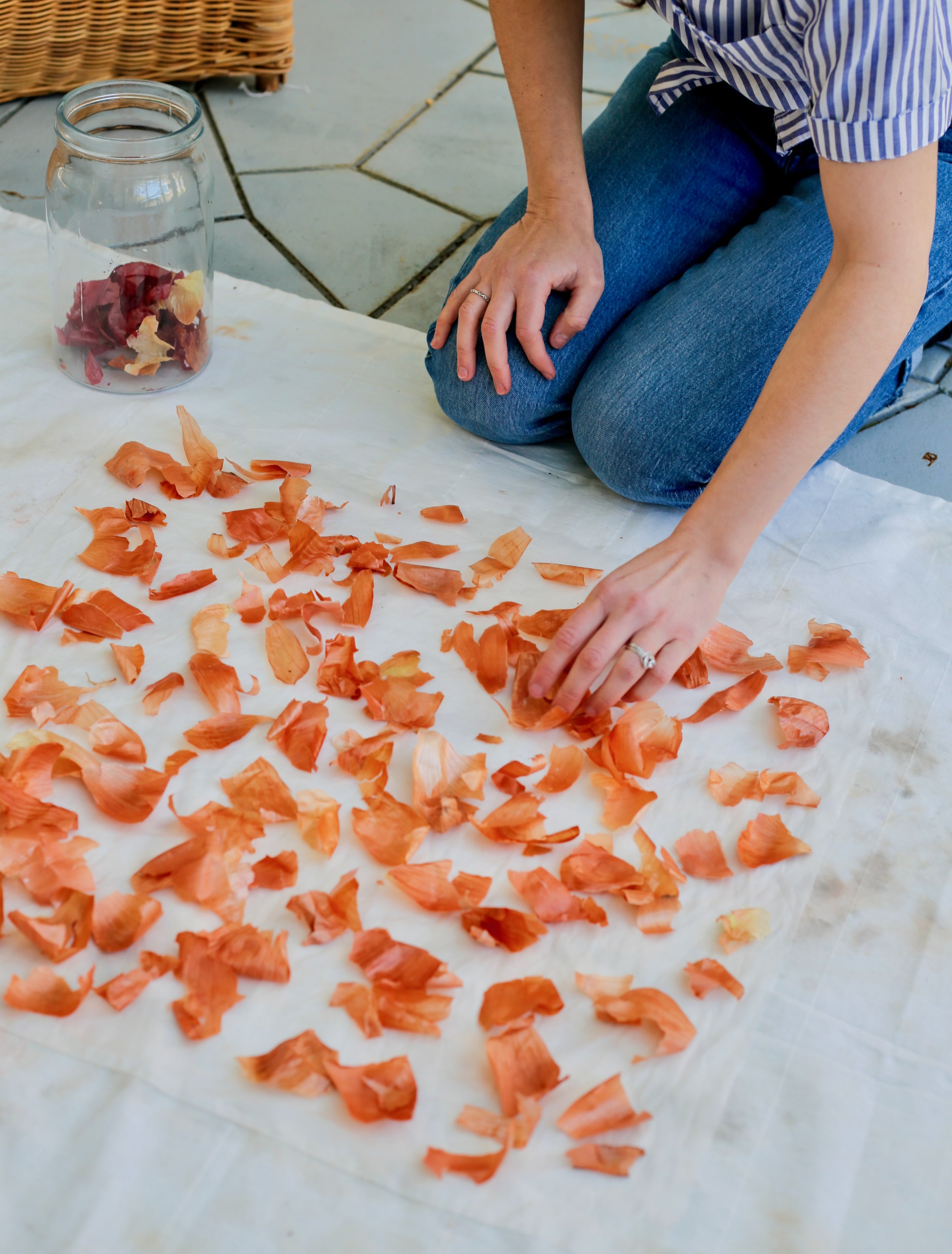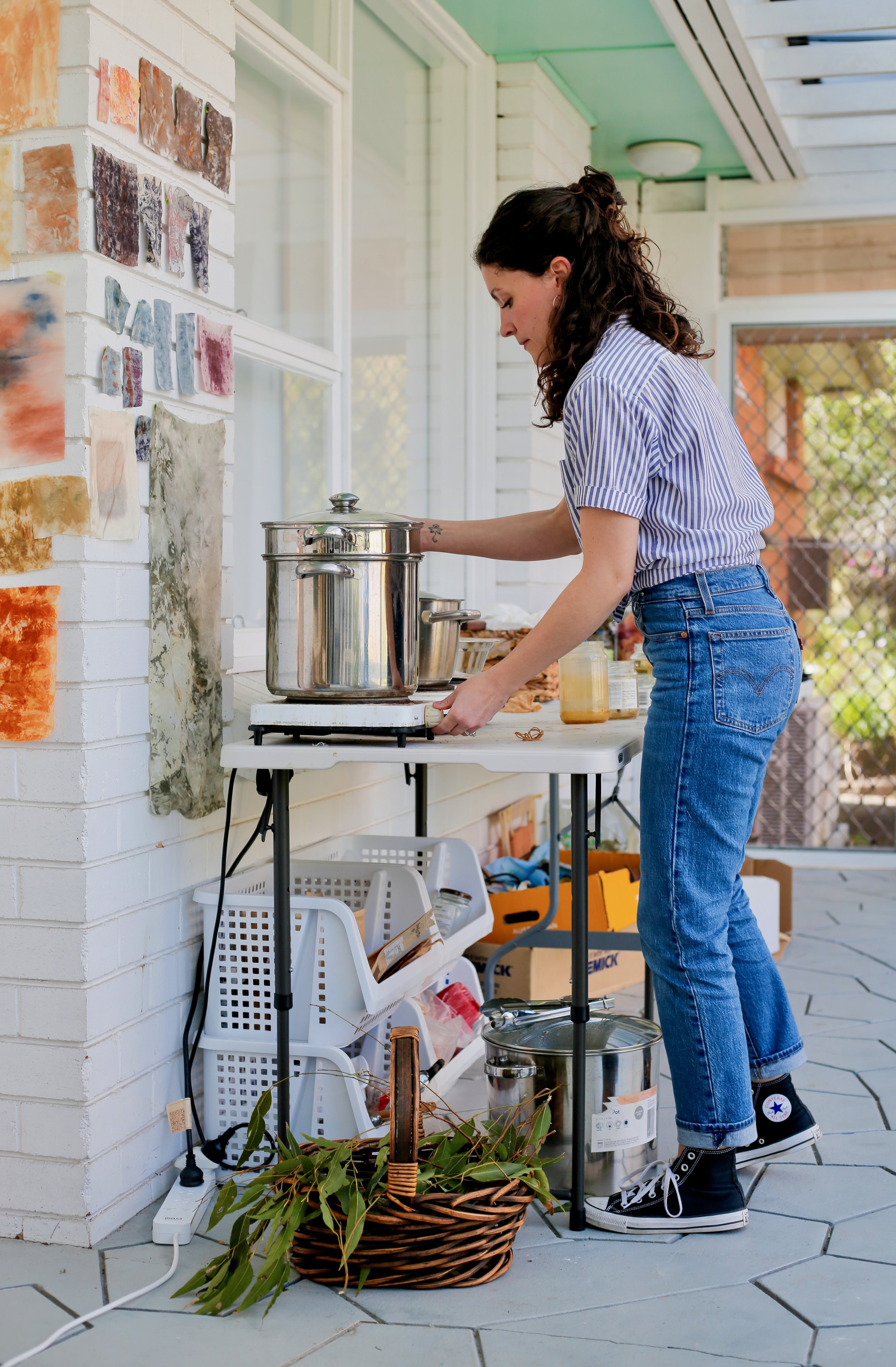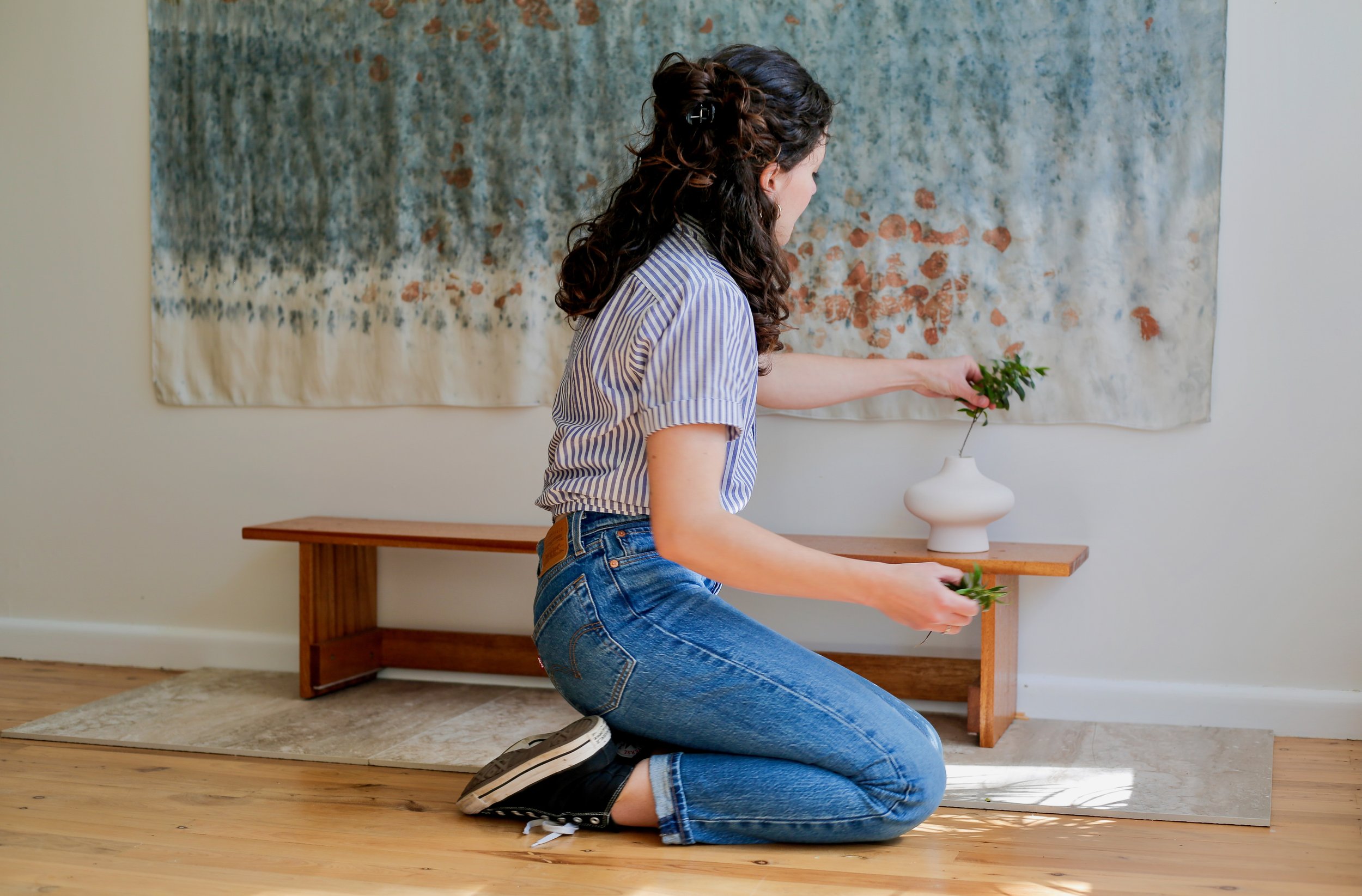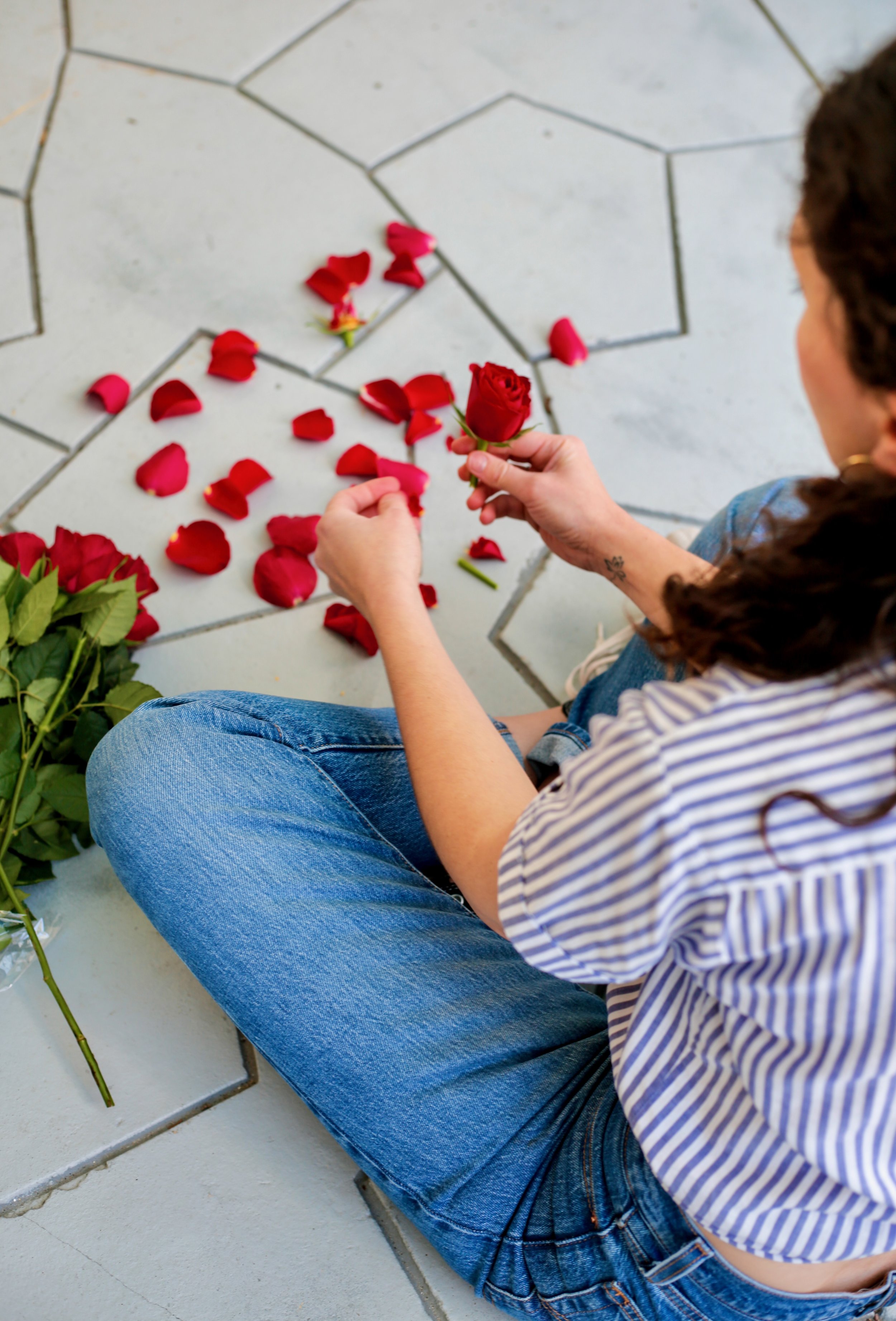Jackelyn Bickell
Sydney-based artist, Jackelyn Bickell, uses natural materials including flower petals, onion skins, eucalyptus leaves and avocado pits to hand-dye her modern silk tapestries – inspired by shadow play and nature.
Words & Photography: Hande Renshaw
Jackelyn Bickell in her Sydney studio. Photo: Hande Renshaw
Onion skins are one of the natural materials Jackelyn uses to dye her silk tapestries. Photo: Hande Renshaw
Intersect by Jackelyn Bickell. Photo: Courtesy of Jackelyn Bickell
‘I prioritise experimenting with different natural materials to discover new colour palettes and textures. Because natural dyeing can be so unpredictable and a lot of the process is out of my control, I’m constantly gathering information and running swatch tests,’ says Jackelyn Bickell. Photo: Hande Renshaw
When the pandemic hit, Jackelyn Bickell, like so many creatives we’ve featured, had time to fully immerse herself in making artwork she had been craving to dive into for many years.
After studying fashion and working in several different administrative and management jobs over the years across several countries, Jackelyn felt a strong calling to pursue her in passion art. ‘I think I’ve been working up to this my whole life, I was always exploring different crafts and hobbies, but never let myself fully accept that being an artist is what I was meant to be doing,’ shares Jackelyn.
Ideas and experimentation with different mediums had been brewing for a long time, but the opportunity to fully explore them had never presented itself.
‘Through exposure to different mediums and materials, I started experimenting with natural dyeing and always had the vision in the back of my head of creating Modern Tapestries. I kept this idea in my back pocket, waiting for the right time, and when covid hit, I thought it was finally the perfect time to bring this image in my head to life.’
Jackelyn is most inspired by nature, and those little magical moments of light and shadow, ‘Moments like golden hour casting that beautiful light across your bedroom wall with the tree branch casting dancing shadows in that same light. I would encounter feelings of peace and serenity when I took the time to appreciate these simple compositions created by the world around me.’
Harnessing the natural world, Jackelyn uses raw, organic materials to dye her silk tapestries. Pieces found on her walks in nature and food waste are repurposed to become the pigments to form her work – flower petals, onion skins, eucalyptus leaves and avocado pits provide delicate colour and pattern across silk canvas.
‘There’s something about working with the actual material, sourcing it from nature or intentionally saving food waste from my everyday life, handling it and choosing where to place it and how much of it that connects me with the full circle nature of this medium the most. When I work with the whole material it produces much more dimension, texture, and movement across a piece,’ she says.
The dying process can be volatile and unpredictable, each pieces goes through many tests to check the strength and clarity of the natural colour. ‘It’s hard for me to choose specific colours to stay working within because I’m often at the disposal of the resources around me. I can’t go to the art store and choose any colour under the sun or mix any specific colour that I want.’
Jackelyn’s process begins with deciding on the size of the tapestry, the silk then needs to be cut and sewn. Each silk pieces is pre-treated with a mordant bath that preps the fibres to accept and bind to whatever colour I apply to it, so that it will be colour fast. Before any colour is applied to a piece, Jackelyn runs many swatch tests to determine its tonal intensity.
‘I work with lots of different techniques like eco printing, dye baths, painting and ice dyes. One piece often includes several different techniques layered over each other. Once I get started on the final silk, I can’t really undo anything so if something isn’t working, I have to change directions all together or just accept the new direction.’
Jackelyn’s latest collection is focused on larger sized modern tapestries, a scale she’s been keen to explore for quite some time. ‘I believe that these tapestries have a unique impact when they are large scale. Historically you would always see tapestries taking up almost an entire wall. I always loved that impact of a large scale piece that’s so tactile and engaging with the room.’
‘I love working with whole natural materials such as flower petals, onion skins, eucalyptus leaves, avocado pits as opposed to pigment powders from natural materials.’ Photo: Hande Renshaw
‘It’s hard for me to choose specific colours to stay working within because I’m often at the disposal of the resources around me. I can’t go to the art store and choose any colour under the sun or mix any specific colour that I want.’ Photo: Hande Renshaw
‘There’s something about working with the actual material, sourcing it from nature or intentionally saving food waste in my everyday life, handling it and choosing where to place it and how much of it that connects me with the full circle nature of this medium the most.’ Photo: Hande Renshaw
‘There’s always something to be done before working on a finished piece – I can be cutting, sewing, pinning, prepping the silk for colour, ironing, collecting my dye materials, brewing my dye baths, making my ceramic pieces, glazing, or building my timber frames.’ Photo: Hande Renshaw
“There is a direct parallel between the unpredictability of nature and our limitations when attempting to harness it that mirrors my process when creating my modern tapestries – they have an intentional fluid and organic feel to them.”
‘I struggle going about daily life without exposure to nature. I’m highly influenced by my natural surroundings and weather.’ Photo: Hande Renshaw
Rose petals are one of the natural materials Jackelyn uses to dye her modern silk tapestries. Photo: Hande Renshaw


